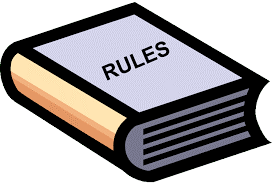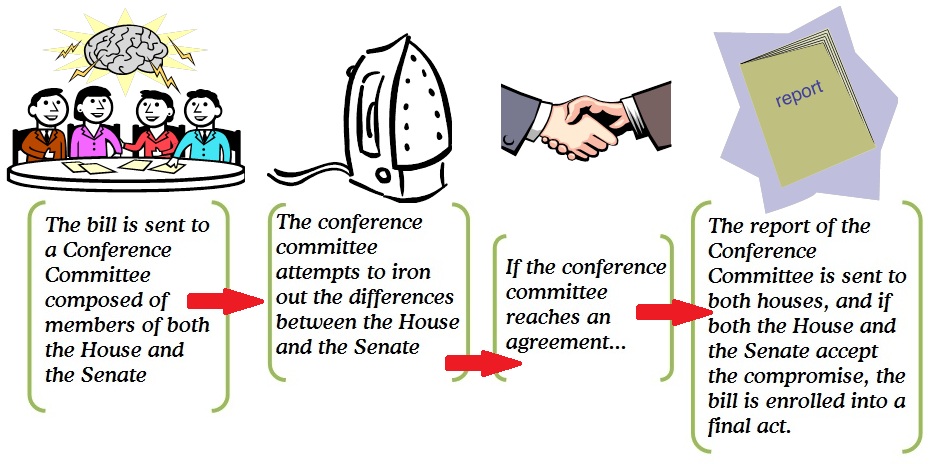by Sharon Eubanks
Editor’s note: This is the fifth in a series of articles on the legislative rules that LegiSource is reposting during 2020-2021. This article was originally posted April 11, 2016, and has been edited as appropriate.
The definition of “reconsider” pretty much sums up what reconsideration is all about – “to consider again, especially with a view to change a decision or action.” In the legislative arena, “reconsideration” is the mechanism in the rules that enables a committee of reference or the House or the Senate to consider changing an action it has already taken.
A legislative body has a right to reconsider a vote on an action previously taken by the body, subject to certain limits. When a body reconsiders its vote, that original vote is canceled completely, as though it had never been taken, and the body immediately votes again upon the question reconsidered.
Closely related to reconsideration is giving notice of intent to reconsider, which provides notice of a member’s intent to reconsider, at some point in the future, a prior vote on an action. The effect of giving notice of intent to reconsider is to suspend all action on the subject of the motion until either the reconsideration is acted on or the time to act on the reconsideration has expired. However, giving notice of intent to reconsider does not necessarily mean that reconsideration will actually occur.
Senate Rule 18 and House Rule 35 govern reconsideration and notice of intent to reconsider in Colorado legislative proceedings on the floor and in committees of reference.
What can be reconsidered? Any action that the House or Senate takes when conducting business as a body and any action that a House or Senate committee of reference takes may be reconsidered by the acting body. But reconsideration is not allowed for an action that the House takes while sitting as the Committee of the Whole (COW).
The Senate does not have a similar rule expressly prohibiting reconsideration of an action of the COW, but there are some practical problems in applying the reconsideration rules when the Senate is sitting as the COW. For example, how would the chair determine if the person moving for reconsideration voted on the “prevailing side” (see explanation of who can request reconsideration, below) when votes in the COW are taken viva voce? However, at least once recently, a Senator made a motion to reconsider an action of the COW and the motion was considered without objection. Nonetheless, generally it has been the Senate’s practice to not permit reconsideration during the COW.
Who can request reconsideration? In both the House and the Senate, only a member who voted on the prevailing side of an action, whether taken on the floor or in committee, may make a motion to reconsider that action. Sometimes a member will switch his or her vote at the last moment to the prevailing side to preserve the option of subsequently moving to reconsider the action.
Only a House member who has voted on the prevailing side of an action of the House may give notice of intent to reconsider that action. And, while only a Senator who voted on the prevailing side may give notice of intent to reconsider a committee action, any Senator, regardless of how he or she voted, may give notice of intent to reconsider an action of the Senate.
How does reconsideration occur? Reconsideration occurs after a member makes a motion to reconsider a House or Senate floor or committee action and the motion is approved. In the Senate, a majority of the members elected to the Senate or a majority of the members of a committee of reference, whichever body took the action at issue, must approve the motion to reconsider. In the House, two-thirds of the members elected to the House or two-thirds of the members of a House committee, as applicable, must approve a motion to reconsider unless a member makes the motion during the last two days of session. In that situation, only a majority of members must approve a motion to reconsider.
To prevent the abuse of motions to reconsider, if a motion to reconsider is lost or, upon reconsideration, the original action is affirmed, the same Senate action cannot be reconsidered a second time unless the motion is approved by unanimous consent of the Senate or a Senate committee, as appropriate. If a motion to reconsider is defeated or the original action is affirmed by the House or a House committee, no further motion to reconsider the same action is allowed.
Senate members of committees of reference may give notice of intent to reconsider. In this case, the measure affected by the notice must be held until the next regularly scheduled committee meeting. But giving notice to reconsider is out of order if holding the measure will cause it to miss a deadline for passage out of committee and the deadline isn’t extended. In contrast, members of House committees of reference cannot give notice of intent to reconsider a committee action.
When can reconsideration occur? A member must make a motion to reconsider an action of a House or Senate committee either at the meeting at which the action is taken or at the next meeting of the committee.
A Senator must make a motion to reconsider, or give notice of intent to reconsider, an action of the Senate on the same day that the action is taken or on either of the next two days of actual session. A Representative must make a motion to reconsider, or give notice of intent to reconsider, an action of the House before adjournment of the legislative day on which the action is taken. If notice is timely given, the House member then has until noon on the next day of actual session to make a motion to reconsider the action.
But, it’s important to remember that a body can reconsider an action only if the measure on which the action was taken is still before the body and the action is still capable of being changed. So, a committee member can’t make a motion to reconsider a committee action on a measure if the committee report has already been signed by the chair and delivered to the House or Senate front desk. And a member can’t move to reconsider a third reading vote if the measure has already been introduced in the second house or delivered to and acted upon by the Governor.
A Senator’s motion to reconsider the action taken on a measure already transmitted to the House, but not yet introduced, must be accompanied by a motion asking the House to return the measure to the Senate. If a House member makes a motion to reconsider, the chief clerk of the House is directed to request the return of the relevant measure if it has already been transmitted to the Senate or the Governor. But if the measure’s been introduced in the Senate or acted upon by the Governor, the measure can’t be returned to the House.
Why would someone request reconsideration? In many situations, a motion to reconsider is used when a member, for whatever reason, doesn’t vote the way he or she intended to vote or a member is absent during the recorded vote on a measure. With reconsideration, the original vote is wiped away and replaced with the second vote. When controversial issues and close votes are involved, a motion to immediately reconsider a vote can be used to lock in that vote since unanimous consent is required for a subsequent motion to reconsider after the first motion to reconsider is lost or, upon reconsideration, the original action is affirmed. On the flip side, giving notice of intent to reconsider a vote can be used as a delay tactic to slow a measure’s progress through the legislative process or to allow time to try to convince enough members to change their votes and thereby change the action taken. Once notice is given, all action on a measure is suspended and the Secretary of the Senate or the Chief Clerk of the House, as applicable, holds the measure until the time for reconsideration has expired. In the Senate, giving notice of intent to reconsider can be used to delay a floor action up to three days and a committee action until the conclusion of the next regularly scheduled committee meeting. Giving notice of intent to reconsider can delay an action taken by the House until noon on the next day of actual session after the action is taken.
For more information on reconsideration, check out the September 29, 2011, Legisource article, which discusses actual legislative situations that involved reconsideration.









